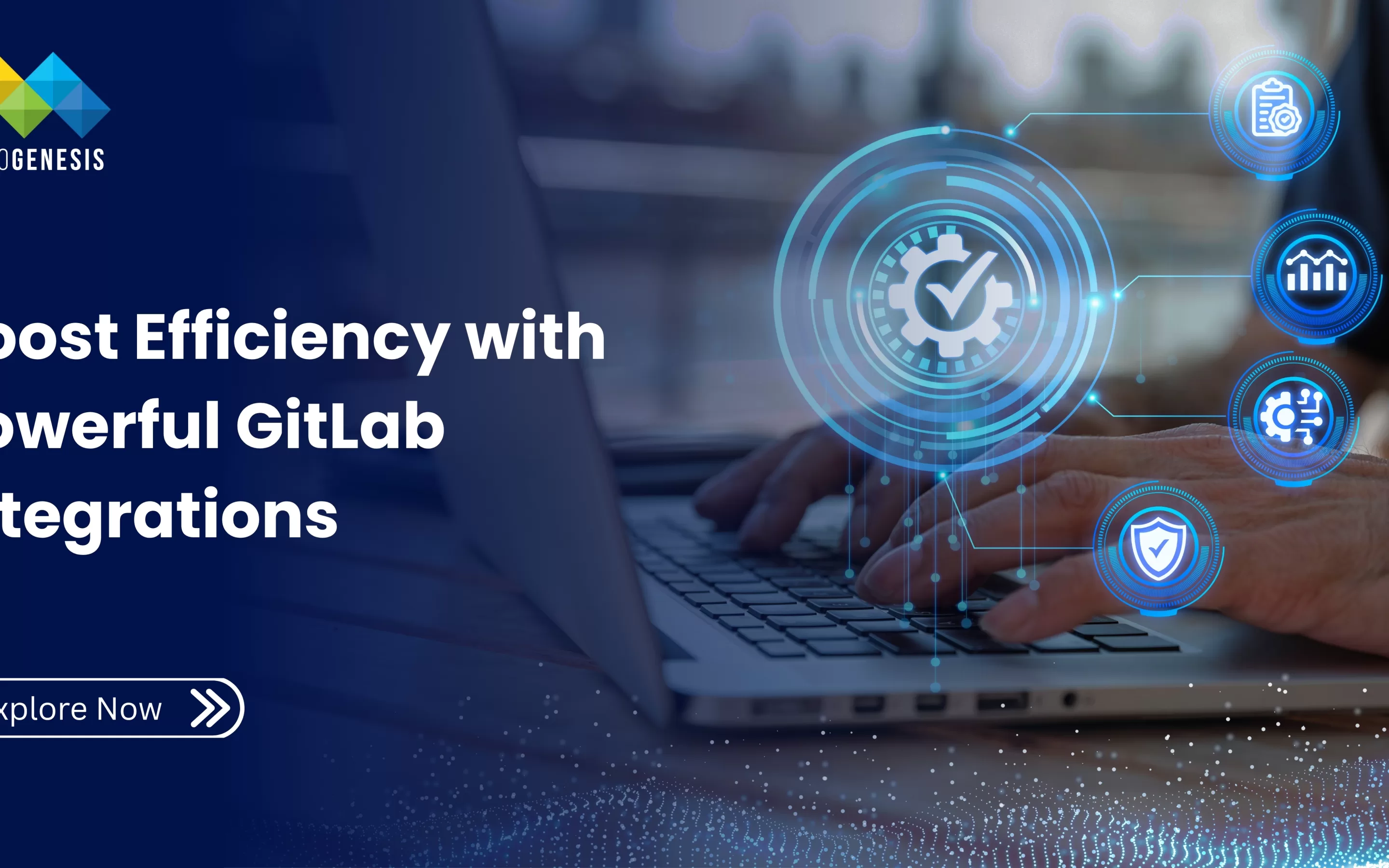Introduction to DevOps Pipelines
The DevOps pipeline is a critical component of modern software development. It serves as an automated workflow that integrates and streamlines the stages of software development, testing, and deployment. The primary goal of a DevOps pipeline is to ensure faster, more reliable, and high-quality delivery of software.
Building a DevOps pipeline involves orchestrating various tools, processes, and practices that enable seamless collaboration between development and operations teams. As DevOps solution providers, we guide you through the steps to design and implement an efficient pipeline. This guide highlights tools and practices to streamline workflows and enhance productivity, ensuring a seamless DevOps transformation for your organization.
What Is a DevOps Pipeline?
A DevOps pipeline is a set of automated processes and tools designed to facilitate the software delivery lifecycle (SDLC). It includes continuous integration (CI), continuous delivery (CD), and sometimes continuous deployment practices.
Key Stages in a DevOps Pipeline
- Source Control: Managing and tracking code changes.
- Build: Compiling source code into executable programs.
- Test: Running automated tests to ensure quality.
- Release: Preparing the software for deployment.
- Deploy: Automating the deployment process.
- Monitor: Observing application performance and user feedback.
Why Build a DevOps Pipeline?
A well-designed DevOps pipeline provides numerous benefits:
- Faster Delivery: Automates repetitive tasks, reducing manual effort.
- Improved Quality: Enables early detection of bugs through continuous testing.
- Greater Collaboration: Enhances communication between development, testing, and operations teams.
- Scalability: Allows seamless scaling of applications and infrastructure.
- Resilience: Improves fault tolerance with regular testing and monitoring.
Steps to Build a DevOps Pipeline
1. Define Your Objectives
Start by understanding your team’s goals and the problems you want to solve. Key questions to consider:
- What is your desired release frequency?
- Which environments (e.g., development, testing, production) do you need to manage?
- What tools and technologies are already in use?
2. Choose the Right Tools
Selecting the right tools is crucial for building a robust DevOps pipeline. Here are some categories and tools commonly used:
- Source Control: Git, Bitbucket, GitHub.
- CI/CD Platforms: Jenkins, GitLab CI/CD, CircleCI, Bamboo.
- Build Tools: Maven, Gradle, Ant.
- Testing Tools: Selenium, JUnit, pytest.
- Containerization: Docker, Kubernetes.
- Monitoring Tools: Prometheus, Grafana, ELK Stack.
3. Set Up Source Control
A centralized version control system (VCS) is the backbone of any DevOps pipeline. Git is a popular choice for managing source code repositories.
- Create a repository to store your codebase.
- Establish branching strategies like GitFlow or trunk-based development.
- Enforce pull requests and code reviews to maintain code quality.
4. Implement Continuous Integration (CI)
Continuous integration automates the process of merging and testing code changes. Steps to implement CI:
- Configure a CI tool like Jenkins or GitLab CI/CD to monitor your repository.
- Set up triggers for automated builds whenever code is pushed.
- Include unit and integration tests to validate each build.
5. Automate Builds
Automating the build process ensures that your application is compiled, packaged, and ready for deployment. Use build tools like Maven or Gradle to:
- Define dependencies and project configurations.
- Generate artifacts like .jar or .war files for Java applications.
6. Set Up Automated Testing
Testing is vital to maintain software quality. A typical pipeline includes the following types of tests:
- Unit Tests: Verify individual components of your code.
- Integration Tests: Test interactions between different modules.
- Performance Tests: Ensure the application meets performance benchmarks.
- Security Tests: Identify vulnerabilities before deployment. Automate these tests using tools like Selenium, JUnit, or pytest, and integrate them into your CI/CD workflow.
7. Implement Continuous Delivery (CD)
Continuous delivery ensures that your application is always in a deployable state. To achieve CD:
- Set up a staging environment that mimics production.
- Automate the deployment process to staging using tools like Jenkins or Ansible.
- Perform manual approval for production releases, if necessary.
8. Containerize Your Applications
Containers provide a consistent environment for running your applications, regardless of where they are deployed.
- Use Docker to containerize your application.
- Define a Dockerfile to specify the application’s dependencies and configurations.
- Use Kubernetes for container orchestration to manage scaling, load balancing, and updates.
9. Automate Deployment
Automating deployment minimizes downtime and reduces human errors.
- Use deployment tools like Terraform, Chef, or Ansible.
- Configure deployment scripts for rolling updates, blue-green deployments, or canary releases.
10. Enable Continuous Monitoring
Monitoring helps you track application performance, detect issues, and gather feedback from users.
- Use tools like Prometheus and Grafana to monitor application metrics.
- Set up alerts for critical events, such as high CPU usage or failed transactions.
- Analyze logs using ELK Stack (Elasticsearch, Logstash, Kibana).
Best Practices for Building a DevOps Pipeline
- Start Small: Begin with a minimal pipeline and expand as your needs grow.
- Automate Everything: Automate as many processes as possible, from builds to testing and deployments.
- Emphasize Security: Include security testing (DevSecOps) to identify vulnerabilities early.
- Encourage Collaboration: Foster a culture of collaboration between developers, testers, and operations teams.
- Regularly Review and Optimize: Continuously evaluate your pipeline’s performance and implement improvements.
Read more: DevOps Lifecycle : Different Phases in DevOps
Common Challenges in Building a DevOps Pipeline
1. Tool Overload
Selecting too many tools can complicate the pipeline. Choose tools that integrate well and fulfill your specific needs.
2. Cultural Resistance
Teams accustomed to traditional workflows may resist adopting DevOps practices. Provide training and promote a collaborative culture.
3. Maintaining Pipeline Speed
A complex pipeline can slow down builds and deployments. Optimize by parallelizing tasks and using efficient testing strategies.
4. Security Concerns
Integrating security into the pipeline can be challenging. Adopt DevSecOps practices to address this.
Example DevOps Pipeline Workflow
- Commit Code: Developers push code to a Git repository.
- Trigger CI: Jenkins automatically builds the application and runs unit tests.
- Build Container: Docker creates a container image of the application.
- Deploy to Staging: Kubernetes deploys the container to a staging environment for testing.
- Run Automated Tests: Selenium executes end-to-end tests in the staging environment.
- Manual Approval: The release manager approves deployment to production.
- Deploy to Production: Ansible automates the production deployment.
- Monitor: Prometheus collects performance metrics, and Grafana displays them on dashboards.
Conclusion
Building a DevOps pipeline is an iterative process that evolves with your team’s needs and technological advancements. A successful pipeline automates repetitive tasks, ensures software quality, and accelerates delivery timelines. At MicroGenesis, we provide DevOps solutions tailored to streamline your processes and foster digital transformation. As a trusted digital transformation company, we help organizations design and implement pipelines that drive efficiency, collaboration, and innovation. Partner with us to elevate your DevOps strategy.




